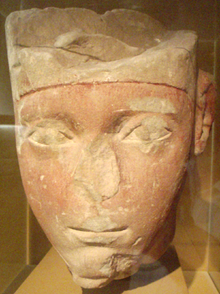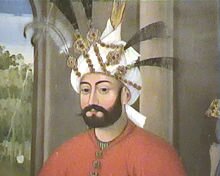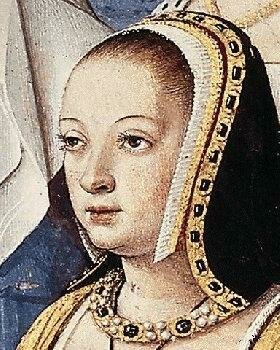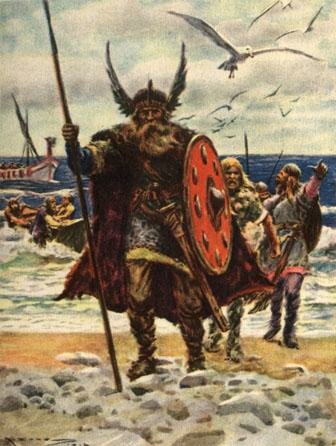Top 10 Child Rulers in World History
Suggested by SMSRulers and monarchs are responsible for the health, welfare, politics and productivity of their entire kingdom. Imagine the pressure an adult would feel, let alone a child. However, there have been a number of ancient child rulers in world history. Many times, this occurs as a result of inheritance and due to the deaths of supposed heirs to the throne. Given the strict rules regarding royalty and the throne, age has never been enough to stop individuals from coming into power. Child rulers are commonly assigned regents. These regents act as trusted advisors and maintain primary control over the affairs of the state until the child ruler is of age. At that point, the child ruler is free to do as they please and they are given full power over their respective throne. The following list of the top ten child rulers includes kings and queens, dictators and military leaders—each with their own claim to fame and a different story surrounding their ascension to the throne. They come from every corner of the world and span hundreds of years across world history.
10. Amenhotep 1
Amenhotep ruled for twenty years from 1526 BC to 1506 BC. His ascension to the throne came as a result of the deaths of his two elder brothers. This cleared the way for Amenhotep to become ruler. He is most known for his military dealings. His conquest included moving his empire southward to Nubia, where he secured Egypt’s border at the second cataract, now known as the Great Cataract, of the Nile. Amenhotep’s reign coincided with a period of great splendor and beauty in Egypt. His empire was markedly peaceful despite conflicts with the Bedouins and Hittites. His invasion of Syria was significant due to the fact he was able to secure captives and bring them back to Thebes.
According to historical records, Amenhotep was very skilled in the art of hunting. He was also an excellent horseman. During his rule, there were great expansions in Egyptian architecture and a number of elaborate sculptures built in his honor. In addition to building all over the region, he expanded the use of alabaster stone from Hatnub in his sculptures. He also rebuilt many temples. Amenhotep was deified in his death and given the status of a god.
9. Pyrrhus of Epirus

A leader prone to shifts and change, Pyrrhus was not renowned for his wisdom. However, for his time, he is considered part of the pantheon of great military leaders. Hannibal, quite famous in his own right, is recorded by Plutarch as having considered Pyrrhus the most astute and effective commander of all time. Appian, another ancient historian, considers him the second best following Alexander the Great.
Despite his fame for military leadership, Pyrrhus maintained a reputation of goodwill and consistent benevolence. The most common political criticism of Pyrrhus was his inability to remain focused and his poor handling of finances. He is known to have spent a great deal from his treasury on soldiers for war. Despite this, Pyrrhus’ efforts at military advancement in Italy were significant. Pyrrhus’ campaign essentially represents Greece’s only opportunity to suppress Rome’s military aggression in the Mediterranean
Pyrrhus was an avid writer and penned a number of books on the art and practice of war. Although none of these writings are preserved today, they are known to have influenced other leaders like Hannibal and the philosopher, Cicero.
8. Shah Tahmasp I
Tahmasp was only ten years old when he came into power and inherited the throne of his father, who had began Safavid rule. Due to his age, Tahmasp answered to the leaders of the Qizilbash, a group of men from the Turkic tribe that provided the basis of Safavid power. Leaders of the Qizilbash battled for the status of regency over Tahmasp. Eventually, Tahmasp gained complete control. When he became an adult, he was able to use his full power as Shah, controlling all the tribesmen of the Qizilbash.
Despite a number foreign threats during his reign, Tahmasp helped usher in a period of peace that lasted three decades. He did this by consummating relations with the Empire by way of the Peace of Amasya, an agreement which settled border disputes between Iran and the Ottoman Empire.
Shah Tahmasp’s economic contributions are known and respected. He encouraged the Persian rug industry and helped spread it nationally. This helped inject life into the Persian economy after the Ottoman wars interfered with trade routes.
As Shah of Iran, Tahmasp had the longest period of rule of any member of the Safavid dynasty. He was very influential.
7. Anne de Bretagne-Jean Bourdichon
A Breton ruler, Anne, Duchess of Brittany was born on January 25 1476 and lived until 1514. She was the queen to two consecutive French Kings. Her birthplace and country of rule was Nentes, Brittany.
Anne was known for her mental acumen and she was exceedingly committed to the administrative affairs of Brittany. She was of haughty nature and made it no secret she was very a proud woman. Her priorities included Breton independence and maintaining the seat and title of Duchy outside the French monarchy, a goal she failed after death.
Anne is also famous for her cultural tastes. She enjoyed the arts and was a fan of music and collecting. It is believed that Anne made a special request for the unicorn tapestries, now displayed in The Cloisters museum in New York City, to honor her marriage to Louis XII. She also oversaw the creation of a book of French manuscripts in her name: The Great Hours of Anne of Brittany. Anne originated the practice of keeping junior attendants in the royal court, known as the Queen’s Maids of Honor.
6. Louis the Child

Louis the Child, born in 893, only lived to 911. Of the Carolingian rulers of East Francia, his reign was the final one. At the age of only six, he ascended to his father’s throne. Unfortunately, his reign is famous for having taken place during the continued raids of Magyar people. His coronation in 900 is oldest on German royal record.
Louis was a very small boy and his stature was far from intimidating. He is known for his weak constitution and tendency for sickness. Although he occupied the throne, power over the government and politics was in the hands of his nobles and bishops. It is believed his coronation was more political than anything else. As a result of the death of Zwentibold in 900, Louis’ half-brother, Louis gained the kingdom of Lotharingia.
As he got older, Louis decided to take the reins of his military. However, he would eventually experience many losses at the hands of the Magyars. His military was demolished in 907 and just four years later, Louis died at the tender age of eighteen.
5. 11th Dali Lama

Khedrup Gyatso was acknowledged as the Eleventh Dalai Lama in 1840 due to similar roots as the seventh Dalai Lama, Kelzang Gyatso. It was in 1841 that initial measures were taken to ordain Gyatso as he cut his hair and was given his new name
Gyatso was placed on the throne in 1842 in the Potala Palace. In 1849, at the age of eleven, he took the novice vows of monkhood, formally cementing his status as the next Dalai Lama. The government wished for him to take full power in 1855, but Gyatso died before this could occur. He was the third consecutive Dalai Lama to die before he could fully assume the position and all the powers that came with it.
Gyatso wrote a collection of stanzas relating to the war between the Tibetans and Gurkhas. It was called Story of the Monkeys and Birds.
4. The Shunzhi Emperor

Fulin, The Shunzhi Emperor was chosen to take the place of his father Hung Taiji when he was only five years old. He was the third emperor of the Qing dynasty and first to control China. His reign over China lasted from 1644 to 1661. His time in power is collectively known as the Shunzhi.
As with most of the young rulers on this list, Fulin was appointed regents and they maintained authority over most political and governmental matters. One of Fulin’s regents, Dorgon, had most power from 1643 to 1650, when Dorgon died. It was in 1951 that Fulin began to take control of his government affairs. Although not successful on all fronts, Fulin attempted to address corruption and the influence of the Manchu on political matters in China.
The Qing dynasty capitalized on much of the territory of the fallen Ming dynasty, establishing the foundation for Qing power. There were a number of policies put in place by the Shunzhi Emperor, some of which were not well received including a requirement that citizens cut their hair into a queue.
Smallpox was an endemic in China, claiming the lives of many. Fulin was no exception and succumbed to the disease. His successor Xuanye already had immunity to the disease and ultimately reigned for 60 years.
3. Christina, Queen of Sweden

At the age of six years old, Christina of Sweden ascended to the throne after her father’s death in the Battle of Lutzen. Her protestant heritage was noted since her father fought valiantly in the Thirty Years’ War. However, Christina was the subject of scandal when she gave up her throne and became a Catholic in 1654.
Christina advocated and embraced culture and education. Though particularly mood, Christina was an avid reader and very smart. She had a range of interests and studied manuscripts dealing with spirituality, the sciences and even alchemy. She wished for Stockholm to become the “Athens of the North.” Christina was not in the least bit concerned with the Protestant culture many thought she’d embrace. In fact, she was very attached to the Baroque and Mediterranean practices that steered her away from Protestantism.
She was seen as unusual by some because of her radical lifestyle and masculine behavior. Christina is featured in a number of creative works. In the 20th century in particular, she is regarded as a symbol of inspiration for the lesbian, gay, bisexual and transgender community. In addition to her masculine mannerisms, she preferred to spend her time with men. The only time she made exceptions was in the presence of very attractive women, whom she courted. Christina spent the latter part of her life heavily involved in the arts.
2. Sobhuza II

Despite his extremely young age, Sobhuza became Paramount Chief of Swaziland in 1899, when he was but a few months old. As is customary for rulers in their youth, Sobhuza maintained a regent, his grandmother, during the first two decades of his reign. In all of recorded time, Sobhuza documented reign of eighty-years and nine months is the longest of any monarch.
During his reign, Sobhuza helped lead Swaziland into independence and freed his kingdom from the control of Great Britain in 1968. His title was subsequently changed to King of Swaziland and there were major changes to the structure of his tribal government. It became a monarchy with a constitution. However in 1973, Sobhuza did away with parliament and cancelled the constitution, declaring himself supreme leader.
Polygamy was common in King Sobhuza’s tribe. He kept up this practice and according to record; he married seventy women who birthed two-hundred and ten children over a fifty year span between 1920 and 1970. Ninety-seven of his children are still alive today and at his death, Sobhuza had more than one-thousand grand children.
1.Tutankhamen

King Tut, also known as Tutankhamen was only nine when he came to power and his reign lasted for almost a decade. His fame stems primarily from his willingness to move away from the philosophies of his father, Akhenaton. The tomb of Tutankhamen, located in the Valley of the Kings, is the only Egyptian tomb to be found completely and wholly preserved. However, given his very young age, his most trusted advisor, Ay likely was in charge of major decision making that affected the politics of Egypt.
Tutankhamen was revered and honored greatly during his reign. Although rare for pharaohs and kings at the time, Tutankhamen was regarded with Godlike status. His followers behaved very similarly to the followers of a cult. Historical discoveries suggest that citizens of his kingdom commonly sought him for the forgiveness of sins and shortcomings, similar to the way Christians look to Christ and God for forgiveness, further suggesting his position as a deity. Temples were built to honor him across the world and as far away as Nubia.
Despite the fact the rulers on this list were children; many of them went on to make significant contributions to their kingdoms. Although some died early, others would go on to enjoy long reigns and would become significant parts of their land’s history. Interestingly enough, there is as much variety in the types of child rulers on this list as rulers of any other kind. Among this list were rulers involved in scandals, successful and unsuccessful military leaders, writers, educators, cultural enthusiasts, peacemakers, economic geniuses, and innovative leaders. It just goes to show that age indeed is nothing more than a number.












